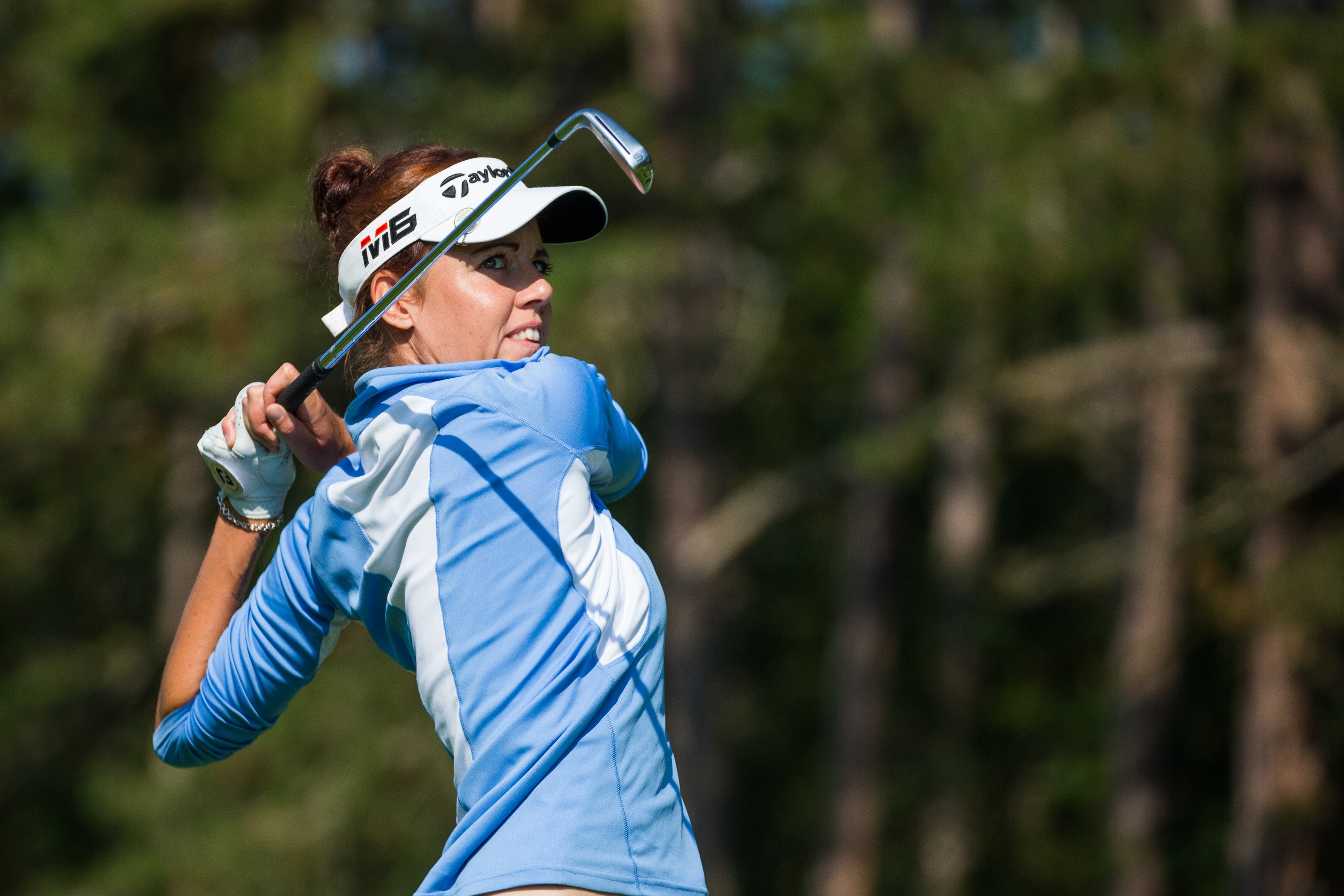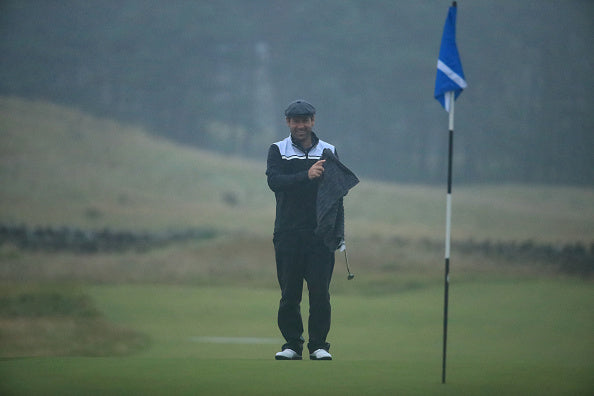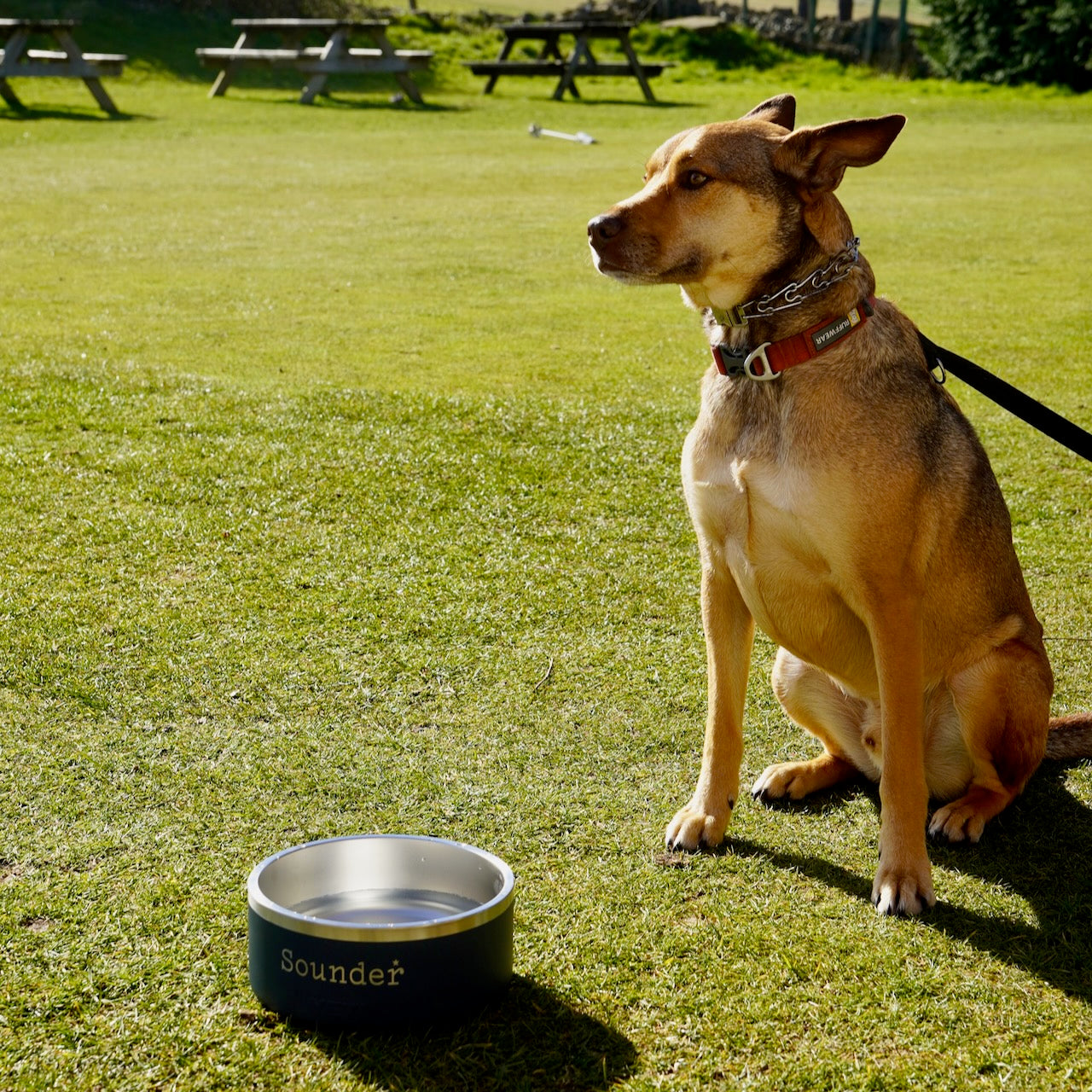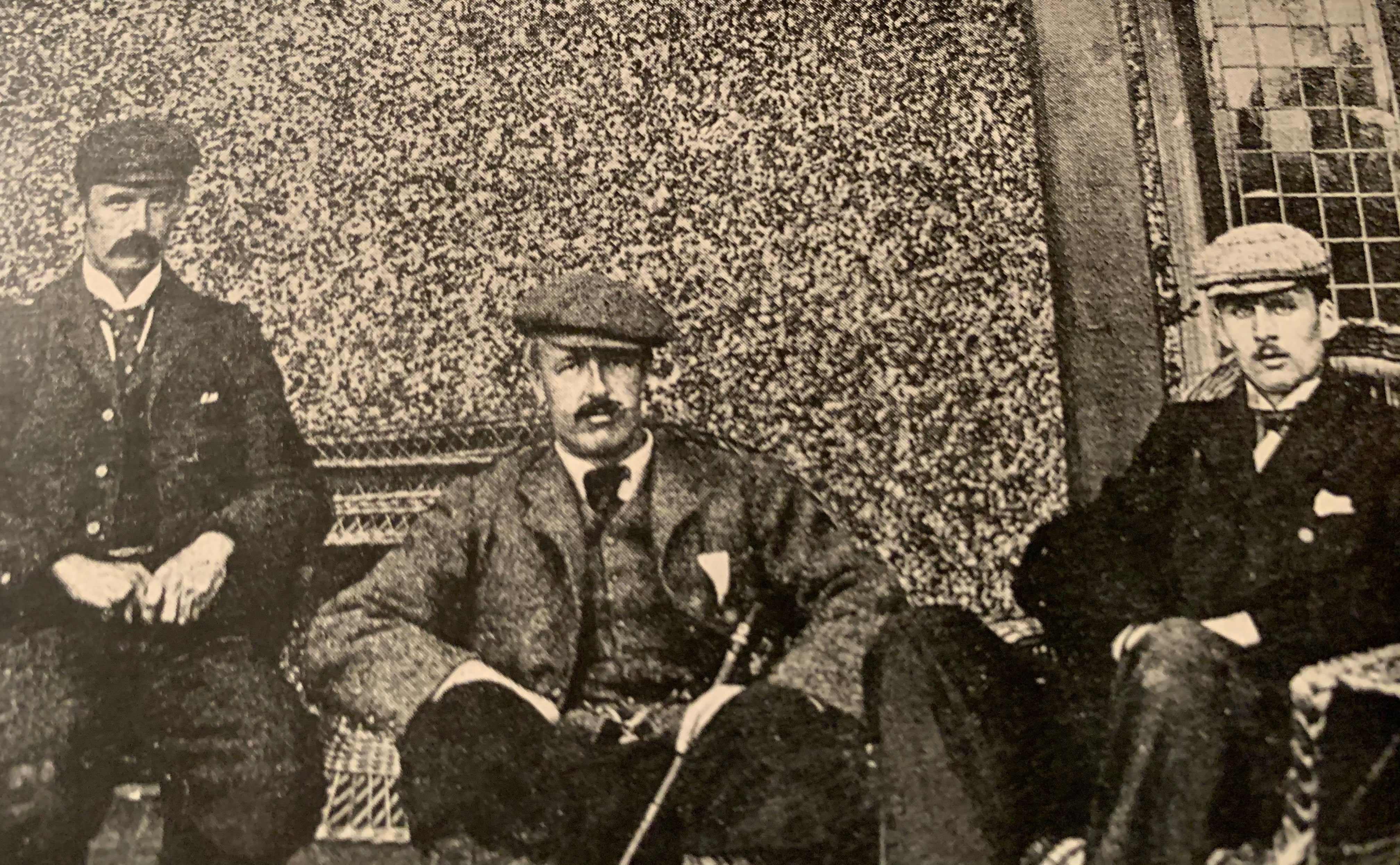Horace, thank you for your time. For the benefit of those who might be unfamiliar with the details of your remarkable golfing life, how would you describe your place in the early history of the game in England?
Horace Hutchinson: I saw all the beginnings, at Westward Ho!, of the new life of English golf. I followed its movement at Hoylake and later at Sandwich. I was on the Committee initiating the Amateur Championship, the International Match, the Rules of Golf Committee and so on. I have been Captain in succession of the Royal North Devon, Royal Liverpool, Royal St George’s and Royal and Ancient Clubs, as well as many others, and in these offices have been not only able but even obliged to follow closely every step in the popular advancement of the game. I do not mention these honours vaingloriously, but only by way of showing that no one else perhaps has had the same opportunities.
That seems to be fair comment. Let’s start at the beginning with your earliest memories of the game…
HH: I began to take interest in what I understood as golf about the age of four. At the time my father was at Government House in Devonport, as General in Command of the Western District, and my Uncle Fred, Colonel Hutchinson, used to come there to tell us of some game, the most wonderful in the world, that he had lately learned to play when he was in Scotland, as Adjutant of the Fife Militia. He lived in Wemyss Hall, in Fife, and used to ride over to St Andrews, breakfasting en route with Mr Bethune of Blebo, and taking him on along with him, for a round or two rounds.
You grew up near Bideford in North Devon, before the town of Westward Ho! even existed. How did England’s first great seaside links course come to be on this specific and remote stretch of coastline?
HH: The Reverend I.H. Gossett was Vicar of Northam, and related to a large family of Moncrieffes, of whom there were several resident then at St Andrews. About that time, one of its members, General Moncrieffe, came on a visit to his relative, the vicar of Northam, and from that chance visit great events grew. For Mr Gossett… led out General Moncrieffe for a walk across that stretch of low-lying common ground known as Northam, or Appledore, Burrows, to the famous Pebble Ridge and the shores of Bideford Bay; and as they went along and reached the vicinity of those noble sandhills later to be known to golfing fame and to be execrated by golfing tongues as “The Alps,” the General observed: “Providence obviously designed this for a golf links.” To a man coming from St Andrews it was a fact that jumped to the eyes. It was not for a clergyman to stand in the way of a design so providential. Mr Gossett was a very capable, effective man… He threw himself heartily into the work of getting a few to join together to make the nucleus of a club.
You were given your first club when you were around four years old but started playing properly at the age seven. What are your memories of that first incarnation of the course at Westward Ho!, and of playing golf in the early 1860s?
HH: There were no flags to mark the holes; but the mode was for the first party that went out on any day to indicate, if they could discover it, the position of the hole, and for those coming after them, by sticking in a feather of a gull or a rook picked up by the way. If, as might happen, the hole was not to be discovered, being stamped out or damaged by sheep beyond all recognition…, this first party would dig another hole with a knife, and set up the signal feather beside that. In this period of the simple golfing life it goes without saying that no apology, or substitute even, for a club-house gave shelter to these hardy primitive golfers. The way was to throw down coat, umbrella or other superfluity beside the last hole. They were safe for two good reasons — that they were not worth stealing and there was no one to steal them.
As a boy, you became friendly with the club’s first professional, Johnnie Allan, who came south from St Andrews. What can you tell us about him?
HH: He was the first Scot ever to come to England as a resident golf professional, and there never came a kinder-hearted or better fellow… My way down to the links, from our house, led right through the village of Northam, wherein Johnnie Allan… had set up his shop. Now if there is anyone who, being a golfer, has not appreciated the delight of the compound smell of the club-maker’s shop – the pitch, the shavings, the glue, the leather and all the rest of the ingredients… Often I would find [Johnnie] sitting on his bench with a golf ball moulded, but noy yet nicked, turning it about with his fingers in the cup designed for its holding, and hammering it with a broad chisel end of his hammer… In the course of the walk down to the links, if I could persuade him to be my companion, he used to tell me tales of the great men in the North, of Old Tom and Young Tommy, of Davie Strath and the rest of them. [Johnnie] was a Prestwick man, and had come from there to work in Old Tom’s shop at St Andrews before he journeyed South. He had never done as well as he would have liked in the [Open] championship, but had twice won the first prize given by way of consolation for those to play for who had not gained a place in the prize-list in the championship proper. That will indicate that his class as a golfer as more than respectably high.
Westward Ho! was at the forefront of spreading the golfing gospel in England, and you became one of the leading players in the club at an early age. What clubs were you playing with in the 1870s?
HH: In the seventies, and in my own teens, I was laboriously, and with rigid economy, working my way to the possession of a variety of wooden clubs such as it would puzzle the modern golfer. There was the driver or playing club.... Then there were the long spoon [and] the “grass” or “grassed” club. The idea, I think, was that, being almost of the driver’s length and suppleness, but with the face not quite so vertical, it could be better used when the ball was lying on the grass — not teed. Three spoons were almost de rigeur… The genius of young Tommy Morris had already initiated a whole school of disciples into the mode of approaching [the green] with iron clubs… The professionals that came to from the north to visit us at Westward Ho!, as well as our resident Johnnie Allan himself, were all followers and exponents of the relatively new mode of jabbing the ball up to the hole with the iron clubs and with a great divot of turf sent hurtling into the air after the ball… The subsequent operations of holing out were always performed with a wooden putter. There was also a weapon known as the driving putter, which was just like the ordinary putter save that its shaft was longer and more supple…. Of iron clubs there were the cleek, the iron and niblick [but] many a golfer thought his set perfect and complete with a single iron for all purposes.
And clubs frequently broke whether you heeled the ball, toed it or hit it consistently out of the middle…
HH: It was the wooden age of golf clubs, as of battleships, and I hope the wood of our ships was better seasoned that that of our clubs.
Did golf handicaps even exist back then?
HH: In those days, before handicaps were fixed, golfing society was divided into two classes — those who were scratch and those who were not — and there was no idea of such a thing as a penalty or plus handicap. Some of the so-called “scratch” players of the day were exceedingly scratchy, and only supported their dignity at a considerable expense: there was one in particular of whom it was said that it cost him three hundred a year to be a scratch player or, that is to say, to play all and sundry amateurs on level terms.

So, you went to Oxford, and played in the first Varsity Golf Match, but you also kept returning to play golf at Westward Ho!. And your caddie from those days, a young lad at the time, went on to great things…
HH: I have said that a little white-haired boy used to carry my clubs at Westward Ho! in my Oxford days. Also that, a few years later, reappearing as an assistant greenkeeper on the course, he was put against me, representing the Northam village club against the Royal North Devon, and gave me a beating. The next year, the Club organised a tournament. Archie Simpson, at that time in the best of his form and one of the most likely champions, though he never did win the [Open] championship, came down to take part in it, and at a certain point in the competition word came in to the club-house that Taylor (he was the little white-haired boy, and the lad who beat me for the village club) was leading the great Archie, and likely to beat him. Therefore there sallied forth a gallery to see this great thing happen; and thereby effectively prevented its happening, for the gallery affected the untried nerves of the lad, he fell away from Grace, and Archie Simpson just got home on him.
But JH Taylor went on to win the Open Championship at Sandwich in 1894, becoming the first English professional to do so. What did your former caddie’s win mean for English golf?
HH: It meant a great deal, that championship. It meant a great deal not only to Taylor personally, but also to all English professional golf. Taylor was really the first English professional. Hitherto, when we wanted professionals, we had always been importing them from the North. It did not occur to the English caddie that he might become a professional, that there were possibilities and money in it. But all these possibilities the success of Taylor revealed to the English.
Rewinding a little bit to the 1880s, how big was the golfing community at that time?
HH: The golfing population of the day was not a very large one, but it was very friendly. All, with few exceptions, knew each other. Moreover, partly because they were a small brotherhood, there was more camaraderie amongst them than there is now... At that time if you met a man in the train or waiting at a station with golf clubs, you would be sure to say to him, “I see you are a golfer,” and he would respond with a glad pleasure, saying, “Yes — are you?” and you would begin comparing notes. To meet a fellow golfer was something analogous to the meeting of Stanley and Doctor Livingston in the heart of Africa.
But the leading players of the day regularly beat a path between Scotland, Hoylake and Westward Ho! What do you remember about one of your fellow great early amateurs, John Ball of Hoylake?
HH: There [were] three generations of John Ball at the Royal Hotel [which also served as Royal Liverpool’s clubhouse], and already the youngest of the team was of great local repute and of such skill that his father would often issue the proud challenge to the company assembled in the bar-parlour of the hotel: “I and my son’ll play any two.” But those two were not very eager in coming forward.
And what about Old Tom Morris, who took you under his wing when you first visited St Andrews?
HH: It would be a mistake to picture Old Tom as a witty man, or even as a clever man, unless a tact and temper that never fail to be the very best kind of cleverness… It was his rich nature, with its perfect kindliness and charity, that made him so lovable, and such a valuable possession to St Andrews in reconciling the golfing interests, of the Town and of the Club. As a peacemaker he had no equal.
Be honest. How bad was Old Tom’s short putting?
HH: He was the worst short putter, for a great golfer, that there ever was. It is known that a letter was once addressed to him while he was in Prestwick as “The Misser of Short Putts, Prestwick”, and the postman carried it straight to Old Tom. His own way was, in his sheer terror of missing the putt, to get done with it as quickly as possible, and often he would just go up to the ball and hit it in a nervous hurry, without looking at the line at all. So that he hardly gave himself a ghost of a chance of holing. He had a way, too, of dragging back the ball, with a quick movement of his putter, the moment it had missed the hole, to try the putt over again, and this habit had such possession of him, that I am quite certain I have often seen him snatch the ball back long before it came to the hole at all, and even, sometimes, when it would have gone in had he not done so.
You were on the committee of the forerunner to the first Amateur Championship at Royal Liverpool and went on to lose in the final. In 1886, the very next year, the principal clubs of Great Britain paid a subscription fee to provide a trophy for the Amateur Championship, which you won — at St Andrews. Therefore it could be argued that you were the first winner of golf’s second ever major championship. Out of interest, which clubs stumped up for the trophy?
HH: The original subscribing Clubs then, who gave weight of their authority to the new championship, were the following: Royal and Ancient; Royal Liverpool; Royal Albert; Royal Montrose; Royal North Devon; Royal Aberdeen; Royal Blackheath; Royal Wimbledon; Alnmouth; North Berwick; New Club; Panmure; Dundee; Prestwick Club; Bruntsfield Links, Edinburgh; Dalhousie Club; Edinburgh Burghers; Formby; Gullane; Honourable Company of Edinburgh Golfers; Innerleven; King James VIth, Perth; Kilspindie; Tantallon; Troon; West Lancashire. Is it not the case, that there are surprises in this list, both in the form of those who are in it and those who are not?
Thank you, Horace. We look forward to Part II.
HH: Thank you.
Extracted from Fifty Years of Golf by Horace G. Hutchinson, published by Country Life in 1919
Read more

Meghan MacLaren is a professional golfer, and also one of the most original and insightful writers on the game. She was a prolific winner of collegiate events while studying at Florida Internationa...

In a series of exclusive interviews for Sounder, Robert Rock, Eddie Pepperell and Craig Lee recall the wettest and most miserable day of the 2020 European Tour season. Story by Mark Townsend.




